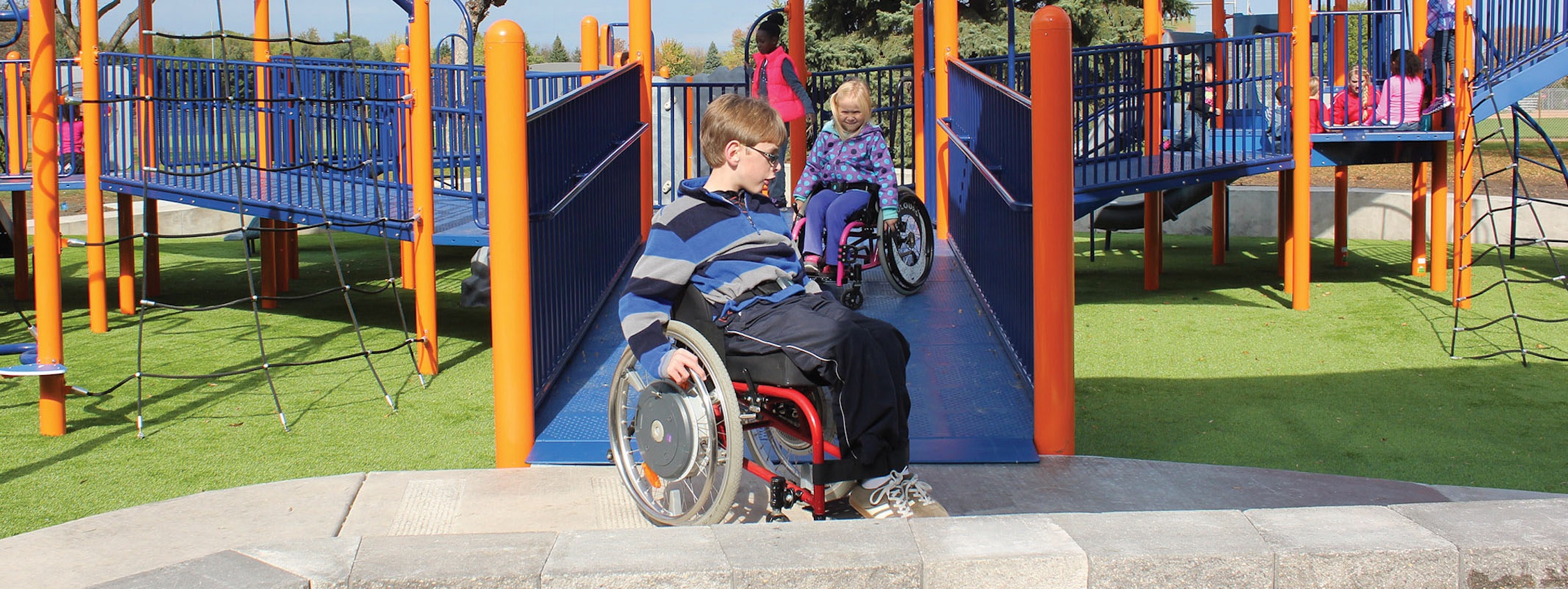ADA and Playground Accessibility
The Department of Justice’s Americans with Disabilities Act (ADA) of 1990 is a federal law prohibiting discrimination on the basis of disability, ensuring equal access and benefit to all people.
Stemming from ADA, the 2010 ADA Standards for Accessible Design created accessibility standards for public facilities that can be enforced under a federal court of law.
How Does ADA Apply to Public Play Areas?
Outdoor play areas for children ages 2 or older should be given equal opportunity to play. Playground equipment and facilities constructed or altered on or after March 15, 2012, must comply with the 2010 ADA Standards for Accessible Design.
According to ADA, an accessible playground is one that offers a range of play experiences to children of varying abilities. There must be:
- An accessible path from the building or parking lot to the edge of the play area.
- An accessible path from the edge of the play area to the play equipment.
- Surfacing that complies with ASTM 1951 (Determination of Accessibility of Surface Systems Under and Around Playground Equipment).
Once a child is in the play area, they must be able to access the play equipment by either moving out of their mobility device onto the playground structure (such as a transfer station) or by direct play structure access in their mobility device (such as a ramp).
For more information on ADA and accessible play areas, visit ADA’s website.

